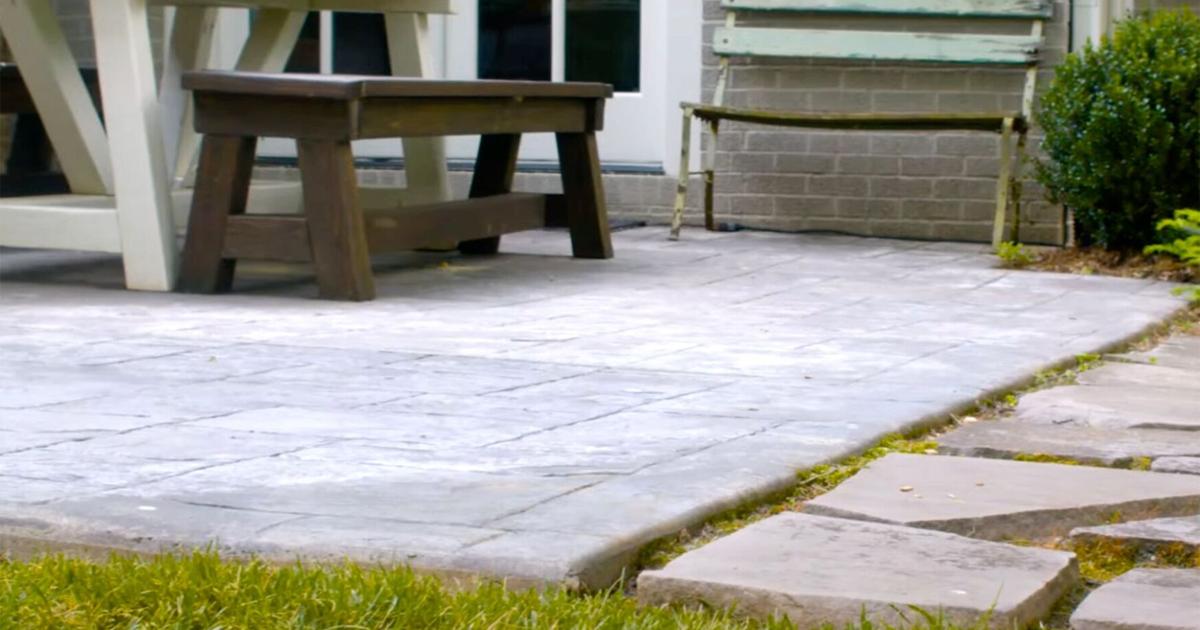(StatePoint) Want to live your best backyard life? Experts say outdoor flooring can help you do it.
“Outdoor flooring can keep grass healthy by providing a solid path over high-traffic areas and define areas of your yard for different uses,” says landscape designer, Doug Scott of Redeem Your Ground. “However, as with interior decorating decisions, the materials you select can impact how you can use those spaces. And because you’re outside, there is Mother Nature to consider.”
To help homeowners make smart outdoor flooring decisions, Scott has partnered with lawn care equipment manufacturer, Exmark, to offer these insights:
• Moss: Moss and other “steppable” living ground covers are perfect for areas with minimal foot traffic, such as shady retreat spaces. The major concern is your yard’s ecosystem. If growing conditions are right, it’s incredibly low maintenance. But when conditions aren’t favorable, it can become a maintenance nightmare. Before making any purchases (costs can range greatly), research if your yard can support this type of organic flooring.
• Mulch: Mulch is an affordable option that keeps outdoor spaces looking natural. Mulch can be used to decorate landscape beds, and as flooring for pathways, play areas, and dining or living areas. While maintenance is low, mulch will need to be replenished periodically as colors fade and the elements wear it down.
• Aggregates: Aggregates include crushed granite, pea gravel and slate chips. Aesthetically versatile, cheap, and easy to install and maintain, aggregates add a natural look, and make a great option for areas with drainage issues. Because they tend to get worn down or washed away, you’ll need to replenish them occasionally or build a border with stone or brick around them.
Before moving forward, consider that pea gravel is great if you want a softer flooring option, but note that its give can create unstable footing. And, if you have young kids, you might want to avoid aggregates entirely.
“I don’t think I know a kid under age 12 who can resist the temptation to pick up a handful of gravel and throw it,” says Scott.
• Wood: Wood flooring is incredibly versatile. It can be cut, customized, painted and stained to fit any style and space and provides a smooth, level surface for entertainment and furniture. The type you choose should depend on your budget and how much maintenance you’re willing to do. Manufactured wood can be expensive, but thankfully requires very minimal maintenance. Natural wood, on the other hand, requires regular staining and sealing.
• Concrete: If you’re looking for a flat, stable surface, concrete is the best choice on the market. While it might seem less chic, it can always be beautified with stains and stamp patterns mimicking brick or stone. While fairly low-maintenance, concrete is prone to cracking, and stamped concrete will need to be sealed periodically. Those repairs can become annoying and expensive down the line.
“If your outdoor space is above tree roots or areas prone to settling, concrete is probably not the right choice for you,” says Scott.
• Stone: Both natural stone and manufactured pavers are durable and a great way to transition from formal to natural in your yard. Natural stone is generally the most expensive outdoor flooring choice, but its durability and versatility makes it well worth it. Manufactured pavers come in a variety of colors, shapes and sizes, and have the added benefit of affordability. While both options require periodic sealing and staining to retain their appearance and durability, if done right, they’ll last you many years.
Scott offers more insights in “Outdoor Flooring,” a recent video from Exmark. To watch the video, visit Backyard Life, which is part of a unique multimedia destination with a focus on helping homeowners make the most of outdoor spaces.
“Now that you have a variety of outdoor flooring ideas handy, all there’s left to do is bring your dream yard to life,” says Scott.








